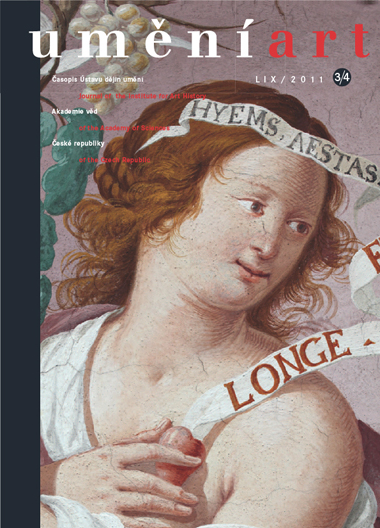Polona Vidmar
La Galerie des Femmes Fortes - the Series of Virtuous Women in Český Krumlov and Vurberk Castles
Father Pierre Le Moyne (1602-1671) of the Company of Jesus published his book La Galerie des Femmes Fortes in Paris in 1647; with the book he intervened in the Querelle des Femmes of his time. Dedicated to the then regent Anna of Austria, the book discussed twenty virtuous women exemplifying female power and weakness. Le Moyne created a compendium of five heroines of four religions: Jewish, Barbarian, Roman and Christian. His book was illustrated with a frontispiece depicting Anna of Austria as a statue on a pedestal surrounded by allegoric figures - a copper engraving by Charles Audran after the drawing by Pietro Berrettini (da Cortona) - and with twenty copper engravings with etched background, depicting the heroines. The copper engravings with etching were executed by Abraham Bosse and Gilles Rousselet after the work of Claude Vignon. The prints were used by the artists as a source of inspirations for paintings and applied arts. As early as the mid-18th century, Pierre-Jean Mariette remarked that the series was very successful and that one can find paintings based on the work of drawings by Claude Vignon in more than one castle. An overview of all the known and preserved artworks inspired by this print series leads us to the conclusion that the series was not appreciated only in France but also in Central Europe. Art historians who have researched this question until now have passed over the painted series in the castles Český Krumlov in the Czech Republic and Vurberk in present day Slovenia. Krumlov is the largest of all the series, composed of eleven preserved paintings. Painters of both series were also more accurate in copying the compositions and the details from the prints than their French colleagues. The article discusses artworks inspired by the illustrations in Le Moyne's book with the stress on both Central European series. Emphasis is put on the content of the paintings, since the iconographic programme of the Vurberk series has only recently been recognised, whereas the majority of the heroines in Český Krumlov had not been previously identified. Finally, a hypothesis as to where the commissioners may have obtained the idea for the series of virtuous women is presented.
Full-text in the Digital Library of the Czech Academy of Sciences:
https://kramerius.lib.cas.cz/uuid/uuid:35b3899c-a29d-d954-7cca-57fc51d3c89e
< back

